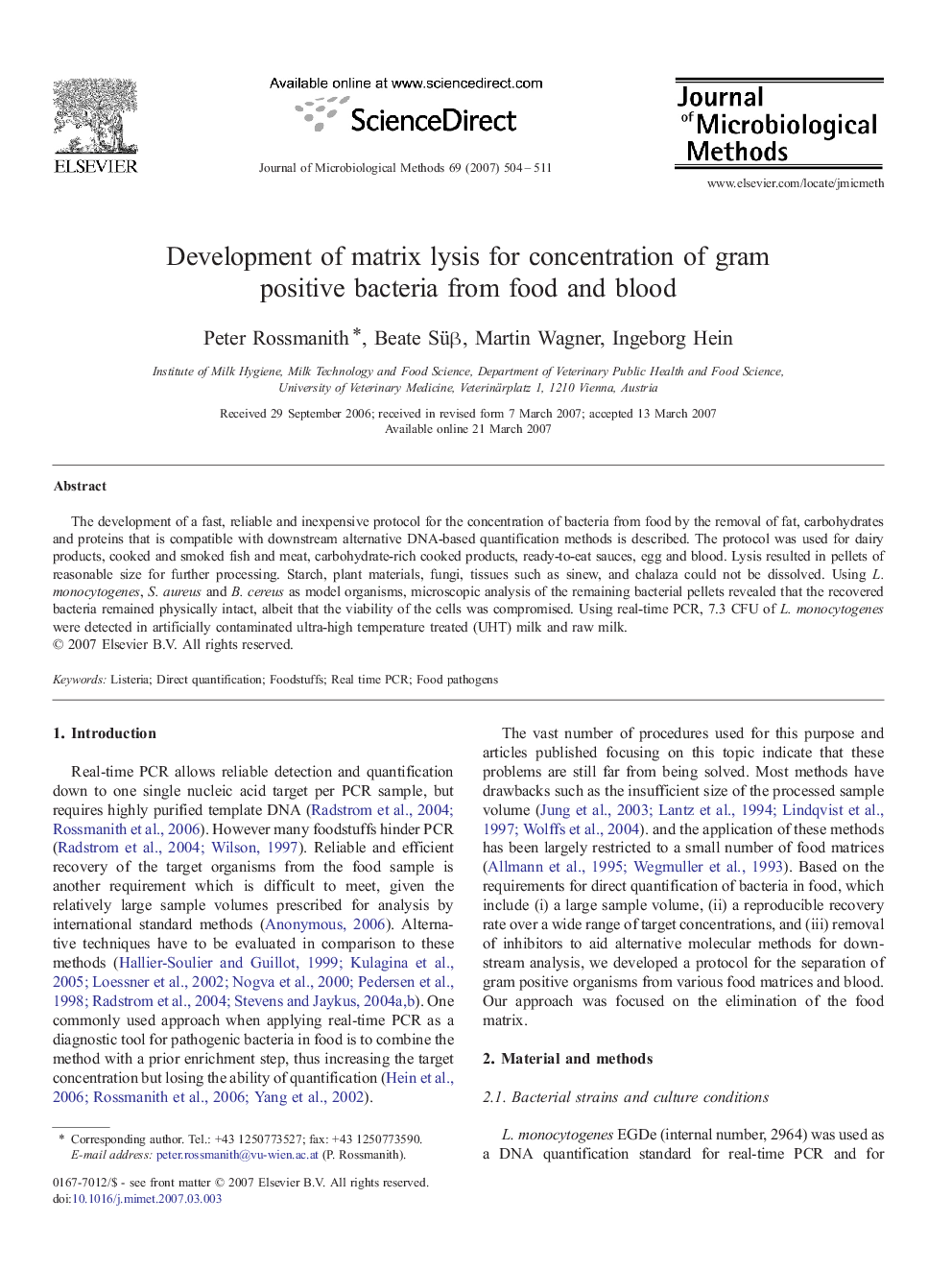| Article ID | Journal | Published Year | Pages | File Type |
|---|---|---|---|---|
| 2091797 | Journal of Microbiological Methods | 2007 | 8 Pages |
The development of a fast, reliable and inexpensive protocol for the concentration of bacteria from food by the removal of fat, carbohydrates and proteins that is compatible with downstream alternative DNA-based quantification methods is described. The protocol was used for dairy products, cooked and smoked fish and meat, carbohydrate-rich cooked products, ready-to-eat sauces, egg and blood. Lysis resulted in pellets of reasonable size for further processing. Starch, plant materials, fungi, tissues such as sinew, and chalaza could not be dissolved. Using L. monocytogenes, S. aureus and B. cereus as model organisms, microscopic analysis of the remaining bacterial pellets revealed that the recovered bacteria remained physically intact, albeit that the viability of the cells was compromised. Using real-time PCR, 7.3 CFU of L. monocytogenes were detected in artificially contaminated ultra-high temperature treated (UHT) milk and raw milk.
